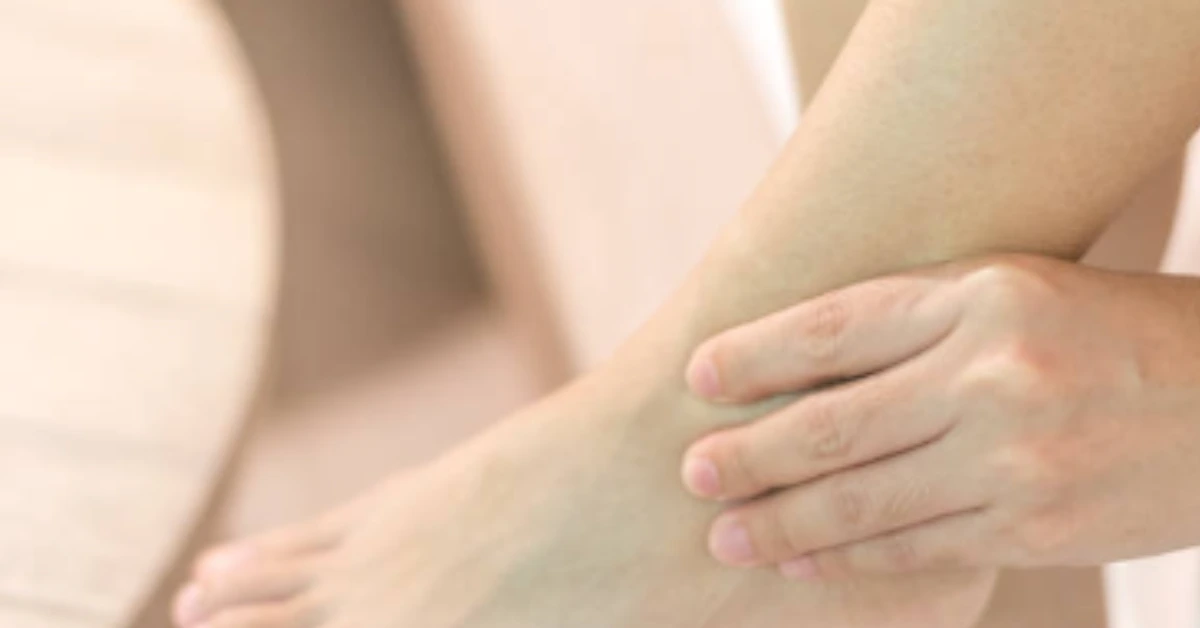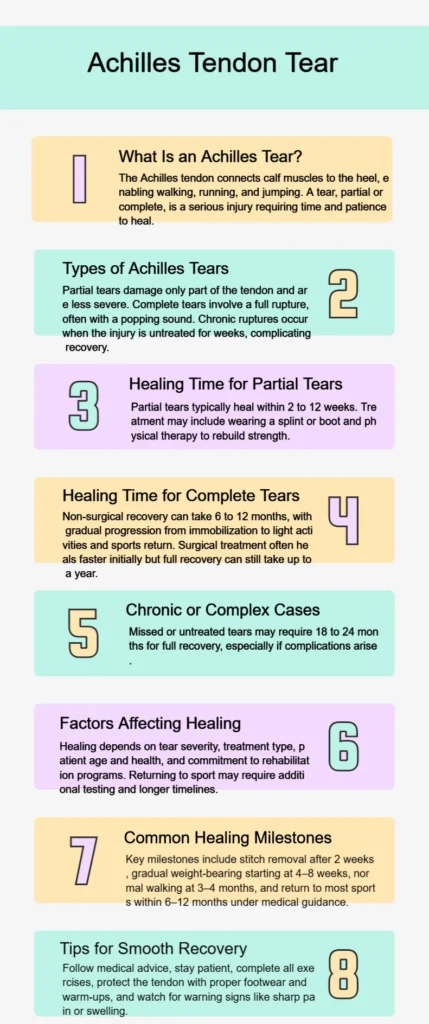Alright, so here’s the deal: You (or your unlucky pal) have managed to snap your Achilles. Honestly, it’s the kind of injury that makes you question every time you decided to “go hard” in that pick-up basketball game or tried to relive your high school glory days. Now you’re probably obsessively Googling, wondering, “How long am I going to hobble around in 2025?” Grab a snack, because I’m about to break it down with all the gritty details—and then some.
Wait, What Really Happens When You Snap Your Achilles?
The Achilles tendon is basically your body’s built-in bungee cord. It connects your calf muscles to your heel and does, frankly, a ton of heavy lifting—literally every time you step, jump, or do that awkward jog for the bus. When it tears, you’ll know. Some folks say it feels like someone smacked them in the back of the leg with a baseball bat. Lovely, right? Sometimes there’s a loud “pop” and suddenly, no more walking like a normal human. Welcome to the club.
Types of Achilles Tears: Pick Your Poison
- Partial Tear: Just a little frayed, like your favorite pair of jeans after too many nights out. Painful, sure, but you might dodge the worst of it if you play your cards right.
- Complete Rupture: The main event. The tendon’s totally snapped. You’ll probably be on crutches, making that weird hop-shuffle everywhere.
- Chronic Rupture: For the stubborn folks who love saying “it’ll be fine” until it’s not. Ignore it for weeks, and you might need some heavy-duty repairs.
The Healing Timeline: Not Exactly Amazon Prime Shipping
Partial Tears
- 2–12 weeks for basic healing. Sounds manageable, but factor in a boot or splint and a few rounds of physical therapy. You’ll get pretty familiar with the physio office—think of it as your new home away from home.
- Don’t skip PT. Seriously, you’ll regret it when your ankle still feels like spaghetti months later.
Complete Ruptures
Look, whether you go under the knife or not, you’re in for the long haul. The main fork in the road: surgery or non-surgical rehab. Both have their own flavor of fun.
Non-Surgical Route:
- 6–12 months until you’re back to full activity. That’s right. You’ll be watching a LOT of Netflix.
- First 4–6 weeks: Boot or cast, zero weight. You’ll get really good at asking people to fetch stuff for you.
- Next 2 months: Awkward baby steps—think toddler learning to walk but way less cute.
- 3–6 months: More intense therapy and maybe some light jogging if your doc gives you the nod.
- 6–12 months: Gradual return to sports, but with a healthy dose of caution (unless you want a sequel injury).
Surgery:
- 4–6 months to initial healing, but don’t get cocky—full sports comeback is usually 6–12 months or more, especially if you’re not 22 anymore.
- Weeks 0–6: Boot/cast and a lot of, “Can you help me with this?”
- Weeks 6–12: Physical therapy ramps up. Your calf will look sad and shriveled for a while—don’t panic, it’s normal.
- 3–6 months: Walking, swimming, maybe light jogs. Your tendon will still feel weird, by the way.
- 6–12 months: If you’ve been a PT all-star, you might get cleared for higher-impact stuff.
Chronic or Messed-Up Cases
If you waited too long or things got complicated (think infection, poor healing, or you just have the world’s worst luck), you could be looking at 18–24 months before you’re truly back to baseline. Yeah, sorry. That’s just how it goes sometimes.
What Actually Changes the Timeline?
- Severity: Complete ruptures = more downtime. Partial tears = slightly less suffering.
- Surgery vs. No Surgery: Sometimes surgery gets you a quicker ticket out of Boot Town, but not always. It depends on your age, health, and how much you actually stick to your rehab.
- Age & Health: Young and healthy? You might bounce back a bit faster, but don’t get cocky. Even pro athletes can take a year.
- Rehab Hustle: The more you commit to PT, the better. Miss sessions, and you just get more time limping.
- Level of Activity: Elite athletes get put through the wringer before getting the green light to compete again. Weekend warriors? You might get back sooner, but don’t expect to be MVP right away.
The “Normal” Milestones (But Don’t Set Your Watch By ‘Em)
- 2 weeks: Stitches out if you had surgery, but your boot/cast isn’t going anywhere yet.
- 4–8 weeks: Starting to put some weight on it, maybe a few Frankenstein steps.
- 3–4 months: Walking normally (ish), maybe some light gym stuff.
- 6–12 months: With luck and hard work, you’re back to sports or chasing your kids around. But don’t expect to be 100% right out the gate.
Real Talk: Tips for Not Screwing Up Your Recovery
- Listen to your doctor and physio. They do this for a living, you don’t.
- Don’t rush it. Seriously. Trying to be a hero just means you’ll be back in the waiting room.
- Do your PT homework. I know, it’s boring. But skipping those dinky little exercises is how you end up with another injury.
- Protect your tendon. Good shoes, slow build-up, and proper warm-ups aren’t optional unless you miss being on crutches.
- Don’t ignore warning signs. Pain, swelling, weakness? Don’t wait—call your doc.
Dodge that Re-Injury (Because You Don’t Want a Round Two)
- Warm up before you go beast mode.
- Calf raises and stretching are your new religion.
- Decent, supportive shoes—nobody’s impressed by those old, flat sneakers.
- And for the love of all things holy, ease back into things. No one’s handing out medals for “fastest return to injury.”
Extra Nuggets No One Tells You
- Your calf muscle will look like it belongs to a different person for a while. Don’t freak out.
- Sleep can get weird because you can’t get comfy with the boot. Pillows help—so does complaining on social media, apparently.
- Shower stools are a game-changer. Trust me.
- You’ll get really good at one-legged squats. Silver lining?
Final Word (AKA the Pep Talk)
Look, in 2025, there’s no miracle cure for an Achilles tear. Medical tech is solid, but you’re still looking at months and months of recovery—anywhere from a couple months (if you’re lucky and it’s just a partial tear) up to a year or more for a full rupture, especially if you’re itching to get back on the field or court. Most regular folks are back to normal-ish stuff in four to six months, but don’t bet your fantasy football season on it.
Bottom line: It’s a grind, but not a life sentence. Go all-in on your rehab, keep your chin up when progress feels glacial, and remember—someday soon, you’ll walk (or run, or jump) without even thinking about that tendon. Until then, embrace the journey, keep your sense of humor, and maybe invest in a good pair of slip-on shoes. You’re gonna need them.

Sam, a dedicated blogger, has immersed himself in the world of content creation for the past five years. His journey reflects a profound passion for storytelling and insightful commentary. Beyond the digital realm, Sam is a devoted NBA enthusiast, seamlessly blending his love for sports with his writing pursuits.


